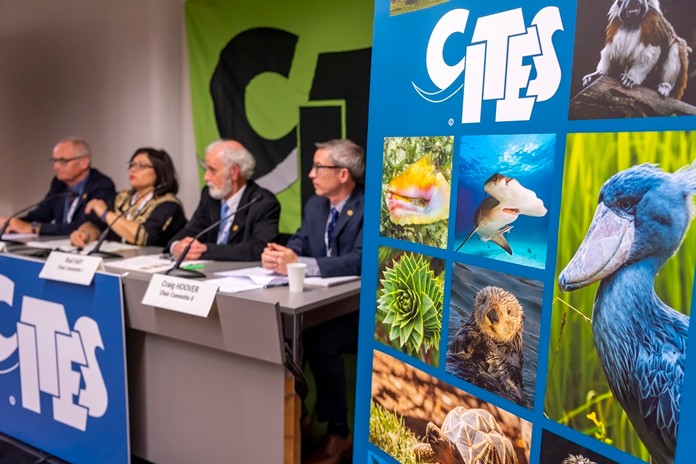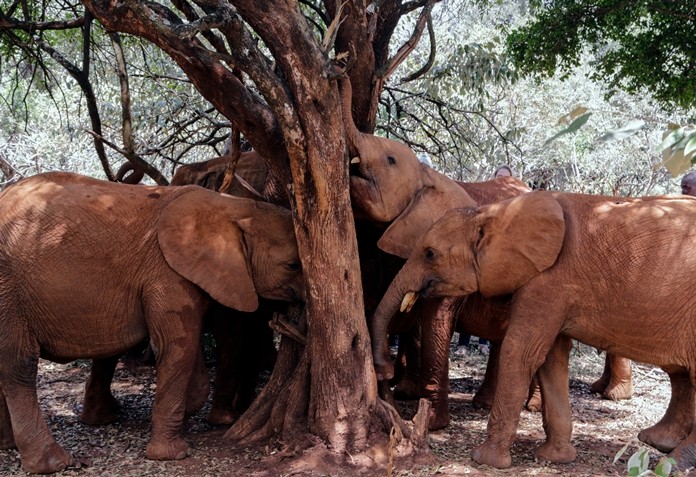
Geneva (AP) — From towering giraffes to bottom-feeding sharks and many species in between, endangered species got new protections under an agreement finalized Wednesday by most of the world’s countries at a conference on saving plants and animals from the ravages of international trade.
The 11-day World Wildlife Conference on updating a convention known as CITES, which aims to ensure that trade doesn’t threaten the survival of endangered fauna and flora, adopted an array of measures and decisions about elephants, otters, star tortoises, saiga antelope, and rosewood — a cherished material for guitar makers — among many others.
The conference occurs every three years and took on added importance this year following a U.N. report on biodiversity in May warning that extinction looms for over 1 million species of plants and animals.
There are growing concerns that policymakers aren’t acting quickly enough to stop it.
Attendees agreed on protections for 18 more shark species that, while stopping short of a full ban, requires any trade in them to be sustainable.
Nations did ban trade of two types of otters, which are coveted as pets in places like Japan, and the popular Indian star tortoise — one of the most heavily trafficked illegally of all the tortoises for pet trade.
Rod Hay, chairman of a committee that handles new listing proposals, said that “we had a large number of reptile proposals and quite a significant number of reptiles and amphibians that were added to the list of CITES.”
“That’s a reflection of pressure, particularly in pet trade, on strange and interesting reptiles,” he said, alluding to efforts by non-governmental organizations, animal-rights groups and conservationists.
Controversy erupted over interpretation about science — the supposed guidepost for decision-makers — amid emotional and political pleas put forward by some NGOs and animal rights activists as well as cash-strapped African governments.

Frustrations emerged among countries like Zimbabwe, which denounced international mandates about its 84,000-strong African elephant population without enough help from abroad in managing it, and Japan, which argued that mako sharks are only facing declining populations in the North Sea and not near the seafaring Pacific archipelago.
“There are a lot of controversies — particularly around the elephant,” said Susan Lieberman of the Wildlife Conservation Society. “The populations are in better shape and are well-managed in southern Africa. Those countries would like to trade ivory. But CITES parties have decided that countries should close their ivory markets and efforts here to open the ivory trade were rejected.”
The fallout was continuing from a measure, spearheaded by the European Union, passed Tuesday to restrict exports of wild-caught African elephants beyond their home countries or natural habitats — with a few exceptions.
“We would have liked a near-total ban on the export of wild baby elephants, but the proposal that was put through, with the eventual backing of the EU is much better than the status quo,” said Kirsty Smith, administrator at the David Sheldrick Wildlife Trust in Nairobi. “It is much better than nothing and we are very excited. It is a fantastic win.”
Israel withdrew a proposal to list the woolly mammoth in CITES conventions after countries like Russia and Canada, which have many remains of the long-extinct animals, aired reservations about the unprecedented idea. Israel had argued that elephant tusk, which faces trade restrictions, can be too easily confused with mammoth tusk, which can be traded legally. The issue remains unresolved.
 |
 |
 |





